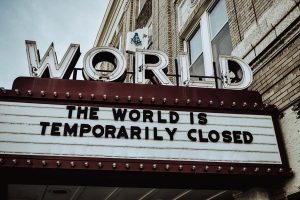
Nobody really knows how SARS-CoV-2, or COVID-19, is set to evolve, whether it is going to last much longer or will run out of steam relatively soon. The ‘Spanish flu’ of 1918-1920 claimed 50 million lives, according to most estimates, the equivalent of 2.7% of the world’s population at that time, and later waned, although other flu variants continued appearing. COVID-19 has been less lethal, despite emerging in a new era of human globalisation. But while many scientists foresaw the appearance of the Omicron variant of COVID-19 (25% more infectious and 25% more likely to evade immune systems, but 25% less harmful than the previous Delta variant), as societies we were caught out, as we were by the pandemic itself when it first swept the world, including the West. We now have vaccines, and treatments for the disease are emerging. But billions of people may be infected in 2022, and the evolution of the virus may well produce ‘something that spreads even faster’, as The Financial Times is forecasting, depending on vaccination, treatments and social distancing.
Many scientists are optimistic that the pandemic is going to become endemic, that it will have to be managed just as flu is managed. Indeed, endemicity is the endpoint, as a recent McKinsey report points out. But in the context of the lack of vaccination in the underdeveloped world, others are reluctant to rule out the pandemic persisting for years to come, with new variants of varying levels of severity, particularly given humans’ inevitable tendency to socialise (now globalised). We have to prepare for this, and for its consequences. Stringent and lengthy lockdowns are not a long-term solution, or even a palliative, given the heavy costs they incur of all kinds. ‘Zero Covid’ is not a real option, even in China.
Perhaps the greatest challenge the world faces, especially the developed world, is vaccinating the global population, as the World Health Organisation (WHO) never tires of repeating. It is not a matter of generosity so much as rather collective intelligence. The emergence of dangerous variants will not be slowed until the virus is combatted worldwide. And we are lagging far behind on this front. We are showing that we do not know how to tackle this as a species. According to the WHO, 59% of the world’s population has received at least one dose, but only 10% in the lowest income countries. At the current pace, these countries will take nine years to reach 70% vaccine levels, which is what the WHO judges to be the threshold to defeat the pandemic, reducing the virus’s ability to mutate. But in hot, poor countries, vaccines may not be the only or best solution; this may come in the form of the oral antiviral treatments currently under development, which are easier to ship and administer. Although they will still have to be paid for.
The McKinsey report mentioned above concludes that ‘in any scenario for the future of the COVID-19 pandemic, much depends on the ways in which societies respond’. And it cites three levers as being especially important: the extent to which countries can roll out the new oral treatments that will counteract the disease’s severity; booster shots, which seem essential: and, thirdly, amid public fatigue, the right combination of public health measures. It bears repeating that we are social creatures, and whether we like it or not digital contact will not replace its face-to-face counterpart. We are already learning, with resignation and varying degrees of patience, to coexist with the virus.
Turning to the impacts, an important effect already recorded is the drop in birth rates, especially in advanced societies, including China, that the situation has triggered in many, but not all, countries (8.4% in Spain), which will have impacts in terms of an ageing population and smaller workforces (with widespread knock-on consequences in terms of even greater automation of tasks).
Greater state spending on health is also set to continue. Will be this be to the detriment of other policy areas? This underlines the importance of such programmes as the Next Generation EU fund, when economies get back on track, but their debts and unforeseen inflation are increasing (another failure of economic forecasting and its models). The Federal Reserve in the US is raising interest rates amid the threat of inflation. This is something that the European Central Bank (ECB) is not contemplating, although it is going to start reducing, tentatively for now, its quantitative easing measures. The winds of change are again blowing through economic policies.
If the pandemic goes on for much longer –and it has already been around for two years– social life is set to continue changing, including not only entertainment but also ways of working and living in cities. Since 2020 the ECB has been forecasting certain trends that were already gathering pace in 2021, despite some attempts to reverse them, and are set to continue their upwards trajectory in 2022 and beyond: more digitalisation and remote working, a shortening of supply chains –the bottlenecks in such chains may persist– and some concentration of markets. Changes in the priorities of private consumption have also been noted, including the money previously spent on foreign holidays, benefitting domestic tourism. An increase in mental illness, a fundamental issue, is another factor.
All these trends and others are likely to accelerate if the pandemic drags on. Some are positive, others negative. Whatever happens, our lifestyles are already being transformed. And although it would be desirable for the pandemic to come to an end or become endemic and less virulent, we must plan for the possibility that it will persist. Paraphrasing the economics commentator Martin Sandbu, planning for a long or permanent pandemic is what living with the virus really means. Which is not the same as ignoring it; quite the opposite. This will be a new normal, and we know neither how it is going to end nor how long it is set to last.



